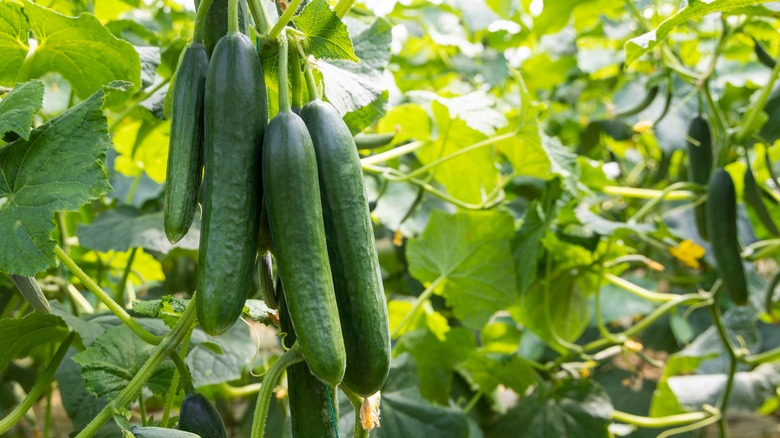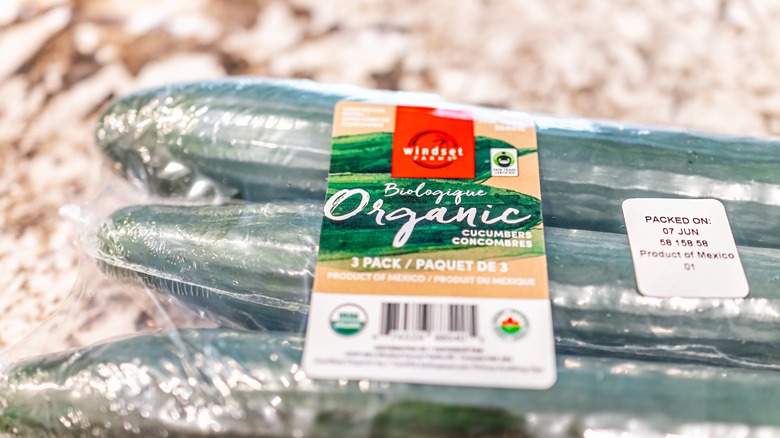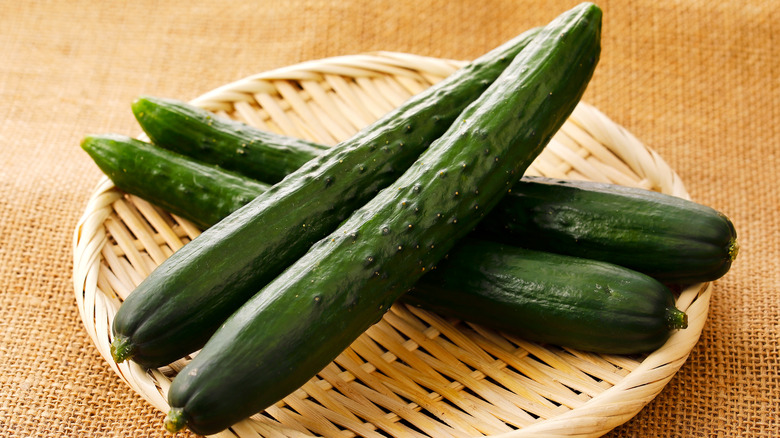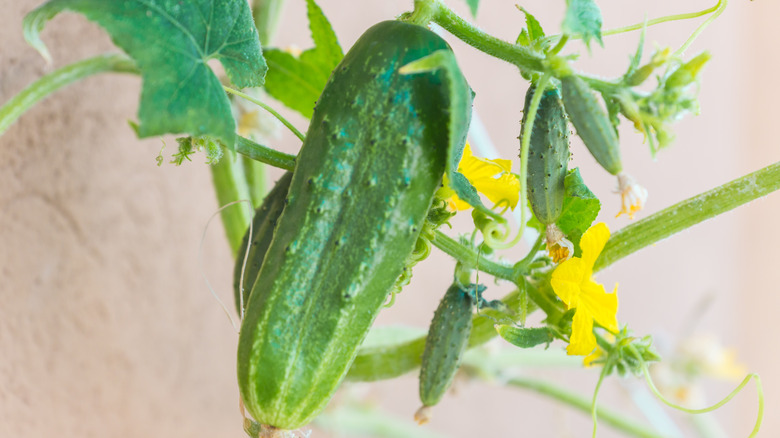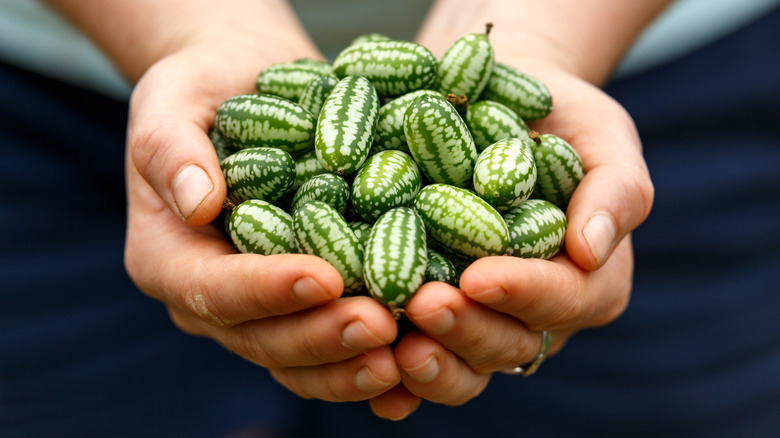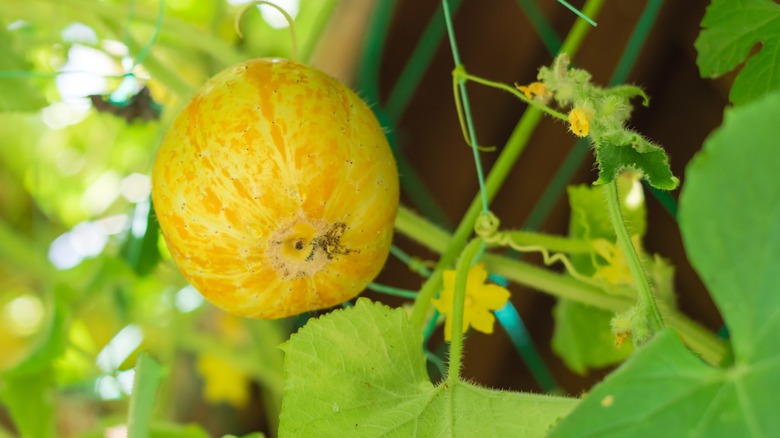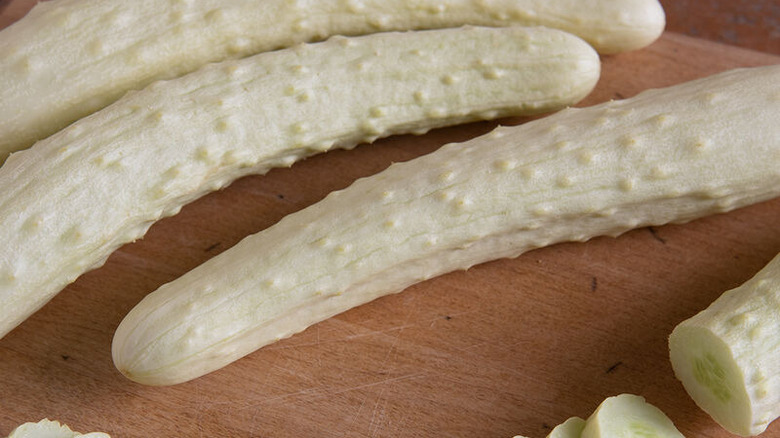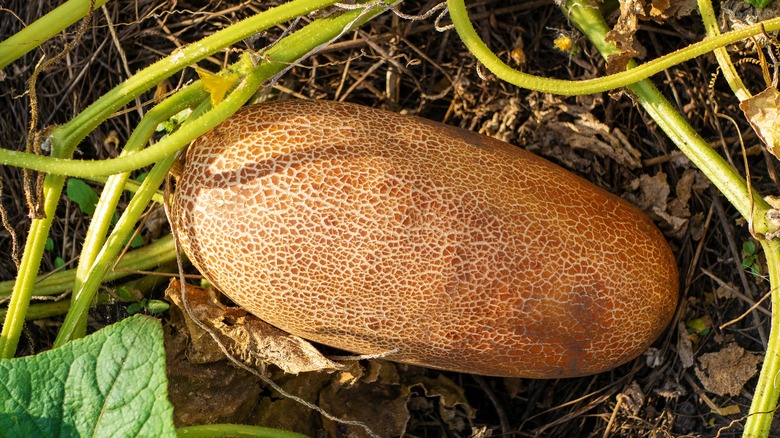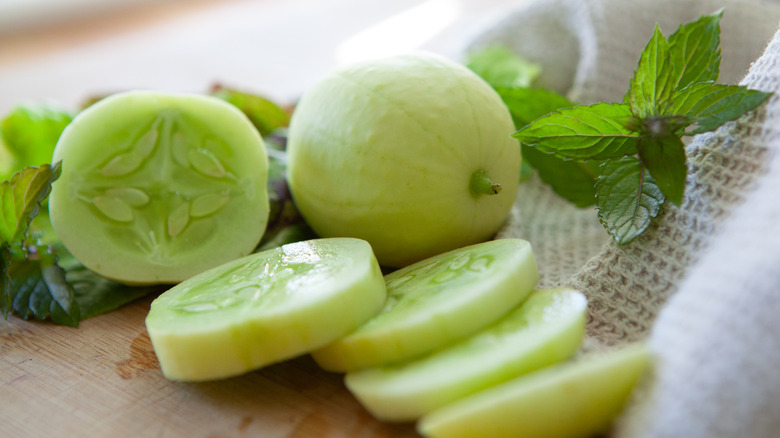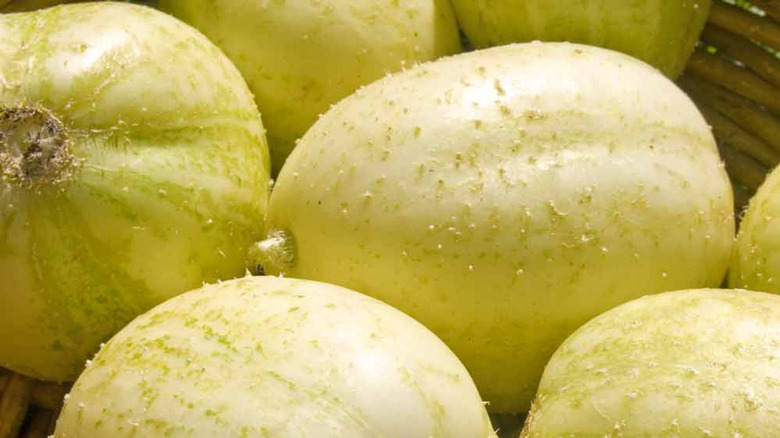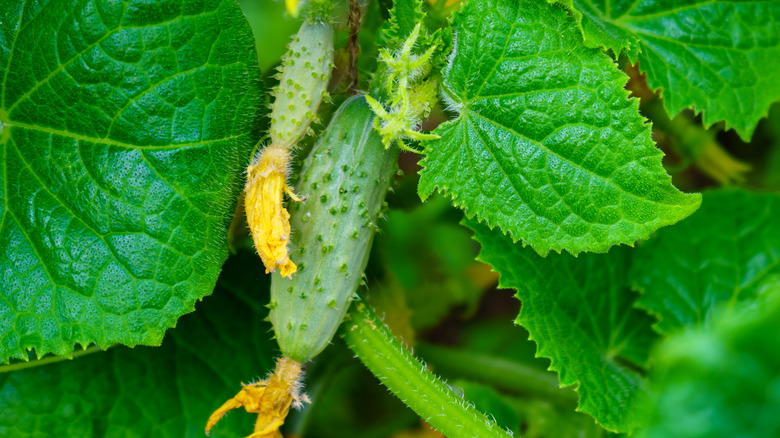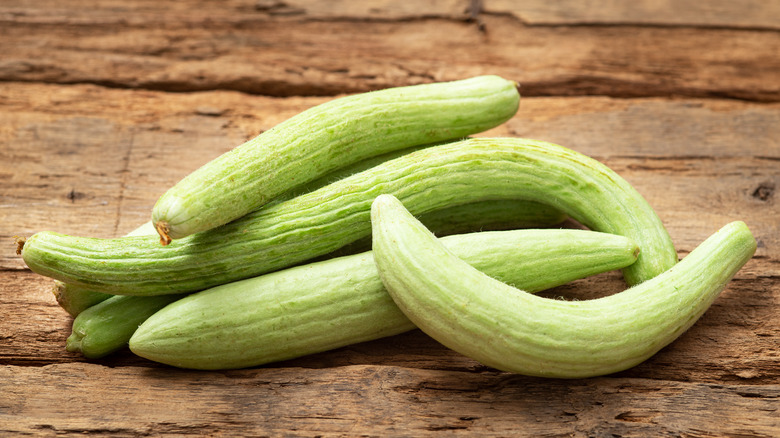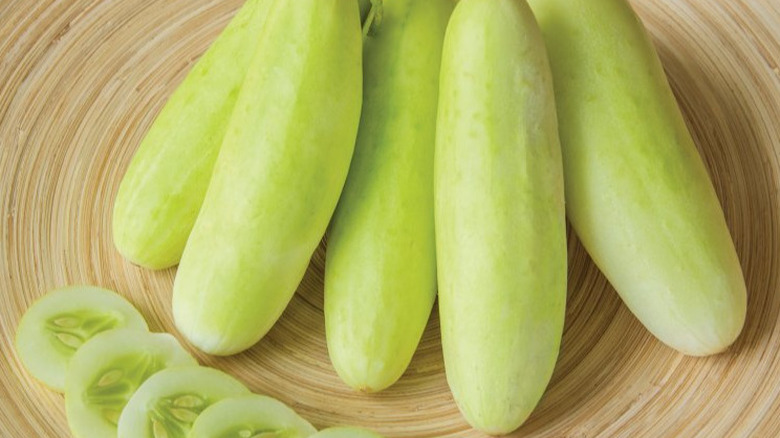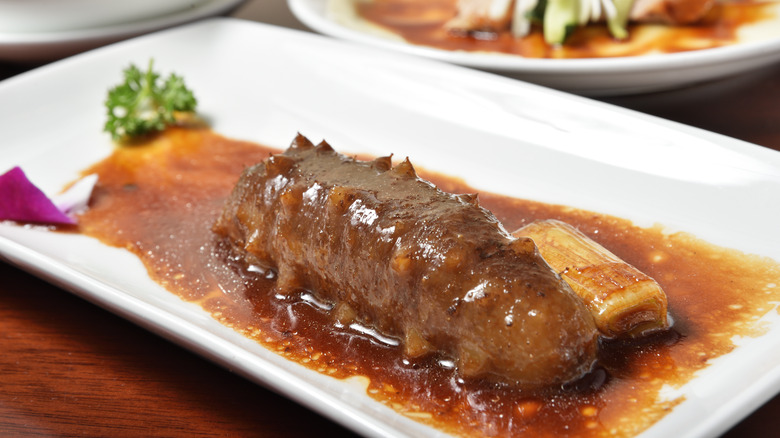13 Cucumber Varieties You Might Not Know About
Cucumber — fruit or vegetable? Let's settle this dilemma once and for all. Cucumbers are, in fact, a fruit. And most of their flavor actually comes from their seeds. Most cucumber plants have long vines — although some grow in bushes — and produce tiny yellow flowers that eventually sprout cucumber fruits. One individual cucumber vine can grow anywhere from 25 to 125 cucumbers!
Did you know that cucumbers are composed of 96% water? For this reason, they are probably one of the best foods to eat when you are dehydrated. Cucumbers are also rich in antioxidants and other nutrients, including vitamin C, vitamin K, magnesium, potassium, and manganese. However, keep in mind that peeling a cucumber lowers its vitamin and mineral content.
Cucumbers are generally classified into two main categories: slicing and pickling. Slicing cucumbers are commonly eaten fresh, while pickling cucumbers tend to have a thicker skin and are best enjoyed as a pickle. Some cucumber varieties can be grown in pots, while others prefer more space to grow. There are almost 100 different varieties of cucumbers to choose from, but you've probably only seen a few types for sale at your local grocery store. We've rounded up the most interesting varieties out there, some of which may surprise you.
1. English Cucumber
The most common cucumber you will find in U.S. grocery stores is the American slicing cucumber. They usually have many seeds and a medium-thick skin. You'll most likely also spot the English cucumber sitting on a grocery store shelf right next to the American cucumbers. English cucumbers are commonly shrink-wrapped in plastic to protect their delicate skin, which is thinner and easier to bruise. American cucumbers are usually coated with wax for protection, but English cucumbers are not — hence the plastic.
English cucumbers grow about 14 inches long and 1.5 to 2 inches wide. The plants grow in vines and are commonly propped up with a trellis. Many people refer to English cucumbers as "burpless" because they are considered easier to digest than their thick-skinned relative, the American cucumber. Due to the thin nature of the English cucumber's skin, they don't need to be peeled before use.
They are often considered seedless, containing less and smaller seeds than their counterpart, making them a more convenient option in many recipes. English cucumbers are a great addition in any raw food dish or salad, especially Asian-inspired meals like a refreshing cucumber kimchi salad. They're also a superb cucumber variety to use in beverages like cocktails, mocktails, and smoothies.
2. Japanese Cucumber
Japanese cucumbers have a similar appearance to English cucumbers — both are long, slender, thin-skinned, and have minimal bumps. However, Japanese cucumbers typically don't grow as long as English ones; you'll find they land somewhere in between Persian cucumbers and English cucumbers when it comes to size. Japanese cucumbers have mostly undeveloped seeds, resulting in a somewhat sweet and mild flavor with a crispy texture, making them a multi-faceted ingredient in the kitchen. They are also often referred to as "burpless cucumbers" since they are easy to eat and digest, thin skins and all.
You might be able to find Japanese cucumbers at a nearby Japanese or Asian grocery store, or perhaps your local farmers market. They are commonly used in Japanese and Asian dishes like sushi rolls; rice bowls; miso soup; stir-fries; Japanese cucumber salad, also known as sunomono; and Thai smashed cucumber salad. They are also traditionally used to make Japanese quick pickles called Shiozuke.
3. Parisian Gherkin Cucumber
Parisian gherkin cucumbers grow quite small and are usually picked when only 2 to 4 inches long. The plant itself only gets up to one foot high, so they are easy to grow in any garden bed or container pot. Parisian gherkin cucumber plants are often a favorite among gardeners due to their disease resistance. The plant can grow along the ground, but it's often recommended to prop them up in a cage or trellis.
This interesting little cucumber is very versatile and often used as both a slicing and pickled cucumber. Parisian gherkin cucumbers can be eaten raw, as they are quite crisp and delicious, but they are also a great candidate to turn into crunchy tiny pickles. Usually, you'll see gherkins pickled whole instead of sliced, and they're often used as a garnish for sandwiches or a tasty addition to a charcuterie board.
4. Mexican Sour Gherkin Cucumber
If you're wondering which cucumber variety is the cutest, then look no further. The Mexican sour gherkins are small cucumbers that look like tiny, grape-sized watermelons. They are aptly often referred to as mouse melons, cucamelons, or sour cucumbers. They have varying squiggly stripes of dark and light green, and the fruit itself only grows to be 1 inch long. Take a bite of one, and you'll find it tastes like a cucumber but with a subtle citrus undertone, and inside houses a thin layer of flesh and lots of small, soft seeds.
Mexican sour gherkins have been around since ancient times and have actually been grown for over 11,000 years. First cultivated by Indigenous groups in Central America, they have been commonly consumed both raw and cooked. They are so small that they can be eaten whole in just one bite, but they can also be chopped up and added into salads and other fresh food dishes, stir-fries, and more. They are extremely delicious simply eaten as a snack straight from the vine, and they're a popular cucumber used in pickling.
5. Lemon Cucumber
Lemon cucumbers get their name because they look like a lemon, but they don't taste like one at all. In fact, lemon cucumbers have a mild cucumber flavor, just like the classic English or American varieties. Yellow in color and round in size, they grow to be almost the same size and shape as a lemon. When you cut one open, you'll see white flesh surrounding many large seeds swimming in a light green goo.
More of a unique heirloom variety, you'll probably only find lemon cucumbers at farmer's markets or growing in your garden if you can find some seeds. Younger lemon cucumbers have a lighter and thinner skin, while the older ones tend to be a darker yellow and have a thicker outer layer, but taste sweeter and crunchier. Due to their round nature and seedy insides, it's standard practice to cut lemon cucumbers into wedges like you would an apple, instead of slices like a classic cucumber. You can eat them on their own, or add them to salads or other recipes that call for cucumber for an extra touch of flair — perfect for impressing friends at your next potluck party.
6. Itachi Cucumber
Itachi cucumbers are a special Asian-style cucumber that varies in color from ghostly white to pale light green. If you get the paler version, it will make an interesting aesthetic addition to your dish. Itachis grow almost as big as Japanese cucumbers, about 9 to 11 inches long. If you want a truly white Itachi cucumber, make sure to grow it in an area that is completely shaded, since direct sunlight will most likely produce cucumber fruits that are light green in color. And if growing straight cucumbers is your goal, support the plant with a trellis.
Itachi cucumbers taste like a traditional cucumber, with a mild flavor that's sweet, crunchy, and not too bitter. They contain small seeds similar to the English and Japanese varieties and taste great on their own or added to different fresh or cooked dishes. They cook up well and don't get too mushy, adding great flavor and texture to stir-fries and other cooked vegetable recipes.
7. Brown Russian Cucumber
At first glance, you might think the Brown Russian cucumber is actually a misplaced brown russet potato. This unique heirloom variety is actually from Ukraine, not Russia, and has brown-speckled skin and a plump body that reaches almost 3 inches wide. It can grow up to 8 inches long, but the flavor is best when it reaches around 5 to 7 inches in length. If you harvest it around this time, you'll get a well-rounded, sweet cucumber with no bitter taste. The more you pick, the more you get, since harvesting encourages the plant to grow more cucumbers.
When sliced, the inside of a Brown Russian cucumber contains an abundance of white flesh that surrounds tiny little seeds. The texture is lovely and perfectly crispy. Because of that, it makes a great ingredient in fresh food dishes or any recipe you would normally use a cucumber.
8. Dragon's Egg Cucumber
Dragon's Egg cucumber is another rare heirloom variety, this one originating from Croatia. As the name suggests, this cucumber looks like you might imagine a dragon egg's appearance to be: small, round, and cream-colored. They grow up to several inches in length — about the average size of a duck egg, or slightly larger. If you decide to grow a Dragon's Egg cucumber in your garden, you will quickly discover that it's a bountiful plant, producing many cucumbers for your enjoyment.
Dragon's Egg cucumbers have thin skin and taste like mild, slightly sweet cucumbers with no bitterness. Similar to the lemon cucumber — and likely due to their round nature — this cucumber has a small amount of flesh surrounding a large, juicy core of big seeds. For this reason, it's best to cut the cucumber into wedges instead of slices for eating. You can eat them straight, add them to salads, or include them in other fresh food recipes. You can also try pickling them, although they are not specifically a pickling variety.
9. Crystal Apple Cucumber
The Crystal Apple cucumber gets its name because when it's ready to harvest, it looks like a Granny Smith apple — same size, shape, and color. It has a sweet, juicy taste, just like apples, too. Inside, you'll find soft, creamy white flesh and a large core of big seeds. These tiny, oval-shaped cucumbers only grow up to about 3 inches long. The skin is thin enough to take a big bite of it whole, just like biting into an apple. You can also cut it into wedges and eat it raw or added into recipes.
This rare heirloom variety is hard to find these days, and some think it may almost be extinct. It's believed that Crystal Apple cucumbers came from China. However, they were introduced to the U.S. in 1930 by the Australian company Arthur Yates and Co. If you can find some seeds, you should try growing them in your garden or container pots. You'll find they are very prolific and the perfect snack eaten fresh off the vine.
10. Bush Pickle
Many pickles are made by simply harvesting young cucumbers before they reach maturity, but the Bush Pickle is a cucumber variety specifically bred to be a pickle. The Bush Pickle cucumber plant is a smaller, more condensed species bearing smaller fruit, which makes it a popular choice for any gardener, since it's easy to grow in small places and container pots. As its name suggests, the plant grows as a bush instead of a vine, so it doesn't need to be trellised.
The plant itself will only grow up to 2 feet high, and the cucumbers grow to be about 4 to 5 inches long, with deep forest green skin bearing many tiny bumps. Harvesting them at this length will ensure you get a crispy, crunchy, and perfectly tender pickle. They can also be eaten raw and make enjoyable additions to any salad, especially when using a vinaigrette dressing.
11. Armenian Cucumber
Armenian cucumbers have a deceiving name — they are not actually cucumbers. In fact, they're a variety of ribbed musk melon that look and taste so much like cucumber that they've kept the name. They even have a similar nutrition profile compared to cucumbers, as they're also rich in vitamins A, C, and K, and potassium. There are several different Armenian cucumber varieties, ranging from light green to dark green colors, and some with alternating colored stripes.
Armenian cucumbers go by many names, including snake cucumber, yard long cucumber, and cucumber melon. They're a highly admired crop in Armenia, where it's been given the name metki, and are commonly spotted in many home gardens. The fruits first sprout as fuzzy, tiny cukes, then grow big and long and can get up to 3 feet in length! For the best flavor, it's generally recommended to harvest them when they reach 8 to 10 inches long. Longer than that and you're left with a bitter cucumber with thicker skin and lots of seeds.
Armenian cucumbers are tasty in fresh salads and pasta salads, or other raw meals like sandwiches or a veggie plater to dip into hummus or guacamole. The skin is thin enough that it doesn't need to be peeled before consumption. They also are a delicious ingredient in grilled veggie kabobs.
12. Honey Plus Cucumber
If you're seeking an incredibly sweet-tasting cucumber that doesn't look like your average one, then the Honey Plus variety is your answer. This special variety has a sleek outer layer with no bumps and ranges in color from pale green to white. Inside you'll find beautifully golden flesh and medium-sized seeds. These cute little mini fruits are usually harvested when they're only about 2.5 to 3.5 inches long and are delightfully crispy.
Honey Plus cucumbers are a newer variety that was originally created by Burpee Europe, and were only available in select locations in the U.K. However, now you can order Honey Plus cucumber seeds from a multitude of different seed companies. They are a deliciously sweet snack all on their own, on top of being a killer way to upgrade your salad, sandwich, or fresh food dish. They also make a great pickle and would be the perfect cucumber in a bread-and-butter pickle recipe.
13. Sea Cucumber
Did you know you can eat a sea cucumber? Well, you can, but does that mean that you would want to? Technically, vegetarians should avoid this type of cucumber, since sea cucumbers are not a relative of the vining fruit, but are actually marine mammals that crawl around on the sea floor and look similar in appearance to a slug. They're considered Chinese seafood cuisine and have been incorporated into Asian dishes for the past 170 years.
Sea cucumbers are also used in traditional Chinese medicine for health issues like arthritis, cancer, and impotence. In addition, they're high in protein, antioxidants, and other nutrients, including Vitamin A, B2, B3, as well as calcium and magnesium (via Healthline). Sea cucumbers also contain compounds that have been shown to have potential health benefits, like supporting heart and liver health, as well as potent antimicrobial properties.
It turns out sea cucumbers are considered a luxury food item in Asia, costing a whopping $3,000 per kilogram. They are sometimes used fresh, but more often, they are used dried, then rehydrated, and put into cooked food dishes like soups, stews, and stir-fries. They can also be consumed raw or pickled. They don't have much flavor, so they're often dressed up with sauces and spices. Their alluring nature has led to many species being overfished, so if you choose to indulge in this delicacy, make sure to source sustainably.
